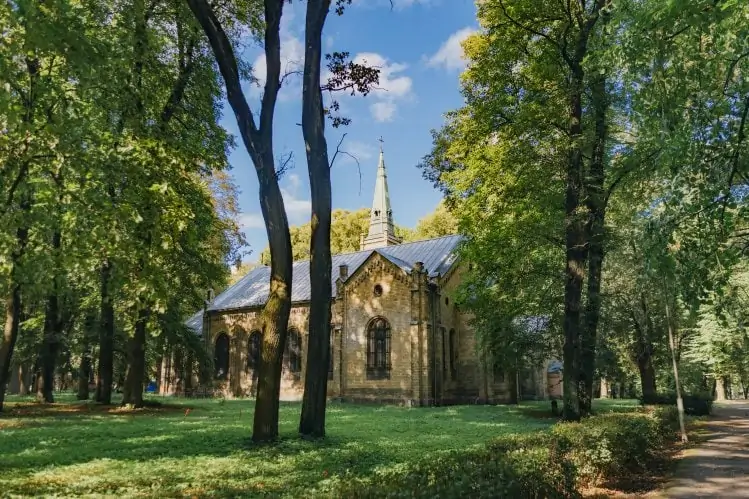
The Great Cemetery is recognized as an architectural landmark of national importance. It combines historic memorial tombs, burial grounds, and a landscaped park, making it one of Riga’s most significant historic cemeteries.
The site stretches between Brīvības, Mēness, Miera, and Klijānu streets, covering a total of 22 hectares. The grounds also include St. Jacob’s Catholic Cemetery and the Wehrmacht German Soldiers’ Cemetery near Mazā Klijānu Street. Several tens of thousands of Riga residents have been laid to rest here, and many of the tombstones are works of art in their own right, with some dating back to the second half of the 18th century. Together, these monuments reflect centuries of Riga’s social and cultural history.
The Great Cemetery was established in 1773, when Catherine the Great decreed that new burial grounds should be created outside the centre of Riga. At that time, this area was on the city’s edge, far from the busy streets of the Old Town. During the Soviet period, however, the site endured heavy damage - many monuments were destroyed or removed, and large sections of the cemetery were cleared to make way for a public park and a nearby street (Senču iela).
Nowadays, the Great Cemetery has taken on a dual role. While it remains a place of memory, it also serves as a green retreat for locals. People come here to stroll along shaded paths, escape the summer sun, and enjoy fresh air amid centuries-old trees and historic monuments. In recent years, more and more memorials have been restored, giving back some of the site’s dignity and historical value. The cemetery is also a meaningful destination for those tracing family histories in Riga, offering a direct link to the city’s past through names, dates, and stories preserved in stone.
Why visit
The Great Cemetery is a green space with historical layers - an atmospheric, quiet place to reflect among century-old monuments, towering trees, and memory-laden paths. It invites both locals and travellers to encounter Latvia’s past through its remaining gravestones, crypts, and artistic markers, many of which speak of craftsmanship and social history. It’s one of Riga’s more subtle - but deeply resonant - heritage sites.
Historical highlight
For nearly two centuries, it served as the final address for Baltic German, Latvian, and Russian dignitaries alike - housing elaborate memorials, ornate mausoleums, and graves of key historical figures. Over time, a number of these monuments have endured, offering visitors glimpses of the rich artistry and heritage that once defined the site.
How to get there
Located in the northeastern area of Riga, in the Brasa neighbourhood, the Great Cemetery spans about 22 hectares. It’s accessible by frequent trams and buses from the city centre, and there’s also street parking nearby. With a leisurely pace, it's possible to walk there from the Old Town in about 30 minutes.
